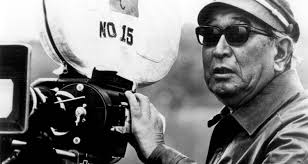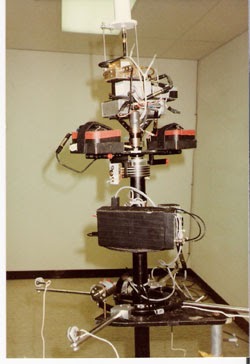Introduction
Let’s take a brief look at how movement has shaped film as we look back at the history of movement within film, the rise of the gimbal and invention of Garret Browns SteadiCam.
From character movement to dollies and cranes. From vehicles to entire sets. The progression of movement in cinema has been an ongoing process. The quest for smooth and cinematic camera movement and the rise of technology has allowed cinema to evolve and further enhance our story telling abilities.
Where it all started
From the 1940’s to the 1960’s we can see many visionary scenes achieved through ingenuity and talent. We can see this done best in Akira Kurosawa’s many amazing films. His ability to enhance his storytelling through movement never fails to inspire me.
Combining the traditional techniques of cinema to achieve fluidity and pacing. Each scene is its own story, with a visual beginning, middle and end. Whilst he may be my favourite from this era he is by no means alone and many greats would go on to build on his work.

The ‘oner’
From Hitchcock to Spielberg, Scorcasse to Mendes, Iñárritu to Cuarón blockbusters to indies. We can all think of a scene or entire movie that employs the much venerated “oner”. The long and unbroken, one take shot has been achieved through ingenious tricks and innovation. Recent films such as ‘Birdman’ and ‘1917’ have taken the idea of the “oner” to a whole new level.
The Gimbal
One of the most important steps forward, was the brilliant use of the gimbal.
Since The Age of Antiquity the principles of a gimbal have been understood and employed. The gimbal has proven to be a robust and versatile tool throughout history.
From warfare and engineering to navigation and star gazing. Delivering flexibility and innovation. It is unsurprising that it found its way into the art of filmmaking. And for this step forward we have one man to thank, Academy Award-winning inventor and cameraman Garrett Brown.
But how exactly does a gimbal work? A gimbal is a pivoting support that allows you to rotate an object along a single axis. A common 3 axis gimbal allows a camera mounted on it to be independent of the movement of the one holding the gimbal.
These 3 axes are identified as pitch (tilt), yaw (pan), and roll.

Garret Brown and the invention of the SteadiCam
Combining these principles and lowering the camera’s centre of gravity. Garret Brown was able to take existing scientific theories and invent the SteadiCam.
By compensating for the movement of the camera, fluid shots were no longer unattainable. By doing so, Brown and his SteadiCam thrust filmmaking into a new era.

Garrett Brown with the first version of the SteadiCam
Watching the first SteadiCam test footage may seem quaint to some. But to me it is endlessly fascinating. Its use in cinema is everywhere and its impact cannot be overstated.
First employed in 1976’s Bound For Glory. But used most famously in Rocky’s training montage on the streets of Philadelphia. It would go on to give us some of cinemas most balletic sequences. Providing dynamic and evolving movement.
The SteadiCam granted filmmakers the ability to create immersive and atmospheric worlds. On a revolutionary scale.

Garrett Brown standing beside the late Haskell Wexler on the set of Bound For Glory (1974)

Garrett Brown and the SteadiCam on the set of ‘Rocky’ (1976)
The ability to climb stairs, cross roads and explore any environment with omnipotence. Mounted on a camera operator’s body, a car or even a helicopter. The Steadicam provided immersion on a scale previously unseen.
Take this scene of Danny riding his tricycle through the halls of the Overlook Hotel. In a simple sequence Kubrick is able to establish both geography and atmosphere. A shot previously unachievable all made possible by the simple SteadiCam device.
The skycam
Masterful shots aside. The true impact of the Steadicam can be seen through its own evolution. First used in 1984, the SkyCam revolutionised sports broadcasting.
The inventor of the SkyCam? You guessed it, Garrett Brown. By slinging a stabilized camera to a taught overhead cable, the SkyCam can be moved across the playing field via a winch. Capturing sporting events in truly cinematic fluidity.

SkyCam controls

The SkyCam

SkyCam winch
Given the success and impact of the SkyCam, Garrett was later asked to put his mind to more sporting events. Divecam, first used in the 1996 Olympics, is another of his ingenious inventions. A camera free falling through a tube was simple and effective. The GoCam (or MobiCam) able to track swimmers underwater. Or even across the length of a sports field.
The story of the SkyCam
DiveCam 1996
The gimbal today
His many achievements aside. What relevance does the invention of the Steadicam have to modern day filmmakers? Rather a lot actually.
Gimbals are now pervasive in many modern day productions. From Hollywood to Youtube. If you know what to look for, the gimbal is at play. With its ability to be mounted to nearly any person or object. Handheld, motorized or indeed even flying. The camera can be wielded in ever increasingly complex ways.



Watch this video from Brandon Li. Now ask yourself how a one man team could capture such sweeping and seamless movement. The answer? The gimbal (and no small amount of talent) plays a crucial role in its creation. From his hand-held stabiliser to his drone, Brandon makes use of the humble gimbal at every turn.
In the same way that Brown learnt and borrowed from the great minds of the past. Modern day filmmakers are able to borrow and learn from the auteurs of cinema. To create their own unique and engaging content.
“Good artists copy, great artists steal.” – Picasso
Whilst there are an endless number of brands and models for filmmakers of all kinds. Garrett Brown’s Steadicam was the genesis of it all. Bear this in mind when planning your next shoot. Emulate Brown’s ability to learn from existing principles and use them in innovative ways.

I hope you continue your posting on this subject niche and I wish to see a lot more from you in the months ahead. Siana Der Arber